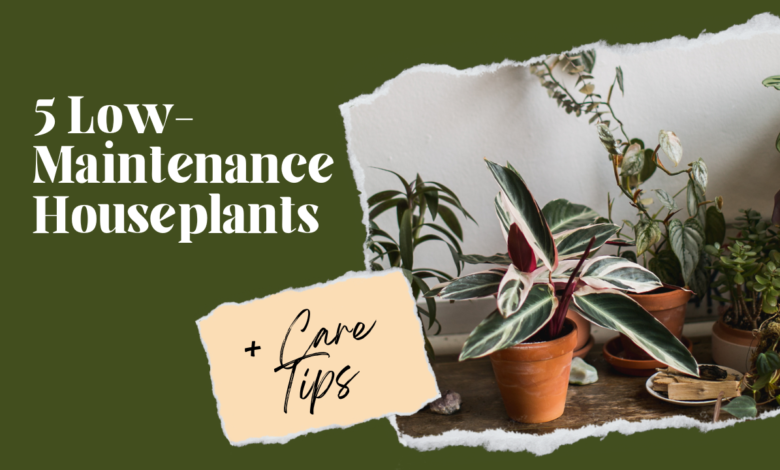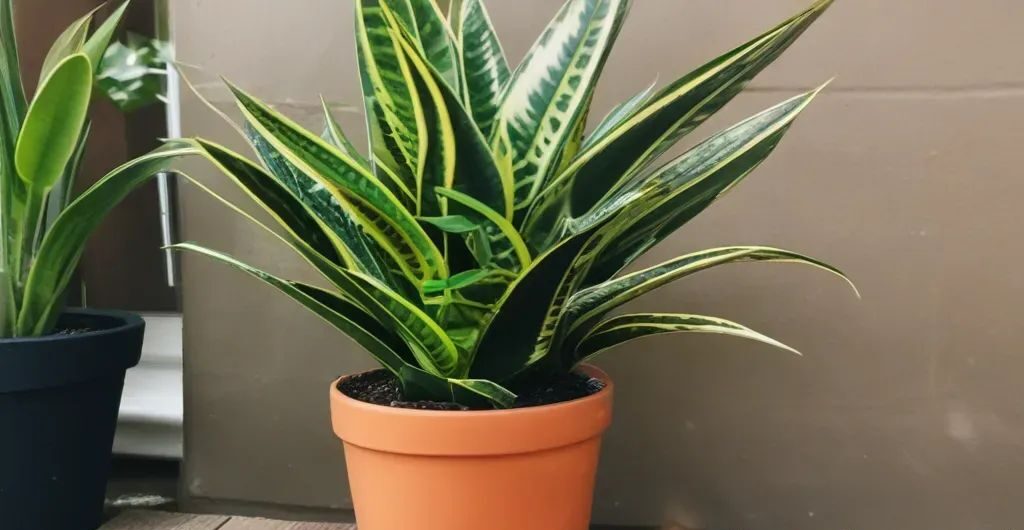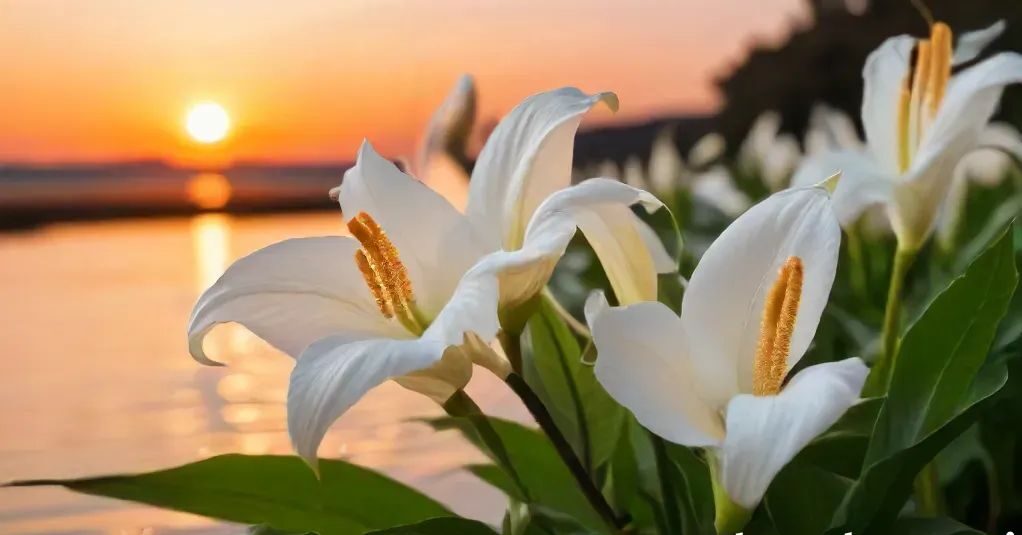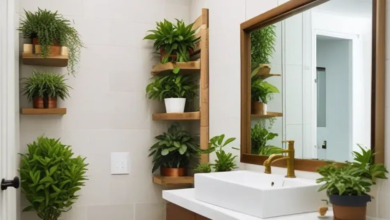5 Low-Maintenance Houseplants for Every Home
Discover the green companions that thrive in neglect, bringing vibrant life and effortless beauty to any indoor sanctuary.

In the realm of indoor gardening, few companions are as cherished and dependable as the resilient houseplants discussed in this essay. From the stoic Snake Plant to the elegant Spider Plant, each of these botanical wonders brings its own unique charm and benefits to any indoor environment. In this comprehensive exploration, we will delve into the fascinating histories, distinctive characteristics, and essential care guidelines for five of the most beloved low-maintenance houseplants: Snake Plant, ZZ Plant, Pothos, Peace Lily, and Spider Plant.
1. Snake Plant

The snake plant, or Sansevieria, is one of the most adaptable, hardy, and low-maintenance houseplants you can find. The snake plant has quickly become a favorite among gardeners of all skill levels due to its adaptability and eye-catching look. Discover the intriguing history, unique traits, and best practices for caring for snake plants in this in-depth essay.
Low-Maintenance Care Tips
- Snake plants can survive in dim light and even thrive in indirect sunlight. Because they are susceptible to leaf scorching, keep them out of direct sunshine.
- Snake plants like periods of dryness in between waterings since they are drought-tolerant. Overwatering can cause root rot, so be careful to wait until the soil is absolutely dry before watering.
- Soil: For optimal drainage, use a potting mix specifically made for succulents or cacti. The roots of the plant can rot if planted in thick, water-retaining soil.
- Humidity and Temperature: Snake plants can withstand a broad variety of temperatures, but they thrive in a range of 60-85°F, or 15-29°C. They fare well in dry indoor settings since they can withstand low humidity.
- Care: Remove any leaves that are fading or dead to promote new development and keep the plant looking good. If you want your snake plant to stay healthy and send forth new roots, you need repot it every few years.
2. ZZ Plant (Zamioculcas zamiifolia)

The ZZ plant, or Zamioculcas zamiifolia, is one of the most hardy and low-maintenance houseplants you can find. The glossy, waxy leaves of the ZZ plant make it a popular among plant lovers and people with hectic schedules since it can flourish in low-light settings. In this post, we will delve into the fascinating ZZ plant, learning about its history, traits, and how to take care of it.
Low-Maintenance Care Tips
- ZZ plants are quite versatile when it comes to light, but they do best in indirect, strong light. Additionally, they do well in spaces with little to no natural light, such as restrooms, workplaces, and other similar settings.
- ZZ plants thrive in dry conditions and really like it when they are left alone for a while between waterings. Water your ZZ plant carefully, making sure the soil dries completely before adding more water. It is crucial to err on the side of underwatering while caring for ZZ plants, as overwatering can cause root rot.
- Soil: For indoor plants, use a potting mix that drains well and is specifically made for ZZ plants. Root rot and other water-related problems can occur in soils that are too heavy or too water-retentive.
- Humidity and Temperature: ZZ plants do best in a dry environment with a temperature range of 65–75°F (18–24°C). Cold damage to the leaves can occur if ZZ plants are exposed to temperatures lower than 55°F, or 13°C.
- Upkeep: To keep the ZZ plant looking good and encourage new development, remove any leaves that are dead or turning yellow. If you want to give your ZZ plant a new start and give it more area to establish roots, you should repot it every few years.
3. Pothos (Epipremnum aureum)

One of the most well-deserved titles for houseplants is pothos, because to its low maintenance requirements and verdant leaves. Pothos, scientifically known as Epipremnum aureum, is a beloved houseplant by amateur and expert gardeners alike for its air-cleaning abilities and trailing tendrils. Discover the fascinating history, unique traits, and best practices for caring for pothos plants in this in-depth essay.
Low-Maintenance Care Tips
- Pothos prefers indirect light but will survive in dim settings if given the correct amount of light. To keep the leaves from burning and wilting, keep pothos plants out of direct sunlight. Pothos thrives in the dappled light that comes in from windows that face north or east.
- The ideal soil moisture for pothos is a consistent dampness, but it may survive periods of dryness in between waterings. To avoid root rot, water your pothos when the top inch of soil seems dry to the touch. When watering, take careful to drain excess water from the saucer. It is crucial to water pothos sparingly because overwatering is a typical problem.
- Soil: For indoor pothos, use a potting mix that drains well. Because it allows for efficient drainage and root aeration, a mixture of peat moss, perlite, and vermiculite is ideal for pothos.
- Temperature and Humidity: Pothos thrives in ordinary indoor humidity levels and enjoys temperatures of 65 to 80 degrees Fahrenheit (18 to 27 degrees Celsius). To keep pothos leaves in good condition, keep the plant away from temperatures lower than 50°F (10°C).
- Care: On a regular basis, prune your pothos to encourage bushy growth and avoid lanky vines. To promote new growth and eliminate any diseased or browning leaves, you can prune back lengthy stems. Due of its rapid growth rate, pothos requires frequent trimming to keep it looking good and healthy.
4. Peace Lily (Spathiphyllum spp.)

The peace lily, or Spathiphyllum, is a popular houseplant because to its attractive white flowers and lush greenery, which not only look beautiful but also help to filter the air. A popular choice for interior gardens, the peace lily—which originates in tropical America—brings a sense of calm and natural beauty to places such as homes, workplaces, and public buildings. The fascinating charm of the peace lily will be revealed in this essay as we delve into its history, traits, and maintenance recommendations.
Low-Maintenance Care Tips
- Lighting: While peace lilies do best in somewhat shaded areas, they may survive in dim light as well. The leaves of peace lilies can be scorched and faded if they are placed in direct sunlight. When growing peace lilies, it’s best to send indirect sunlight toward a north or east window.
- Watering: Moisten the soil regularly without letting it become soggy. In order to keep your peace lily’s roots from rotting, water it when the top inch of soil feels dry to the touch. Make sure to drain any extra water from the saucer. To keep peace lilies from drowning, water them carefully and don’t let the soil become too wet.
- Choose an indoor plant potting mix that drains well to plant your peace lily. Because it allows for adequate drainage and root aeration, a mixture of peat moss, perlite, and vermiculite is ideal for peace lilies.
- Humidity and Temperature: Peace lilies thrive in humid environments with temperatures ranging from 65 to 80 degrees Fahrenheit (18 to 27 degrees Celsius). In drier climates, they may benefit from a misting every so often or being placed near a humidifier, but they can handle ordinary levels of indoor humidity.
- Upkeep: To keep the peace lily looking good and encourage new growth, remove any leaves that are dead or turning yellow. A moist towel may be used to delicately clean the leaves, removing dust and maintaining their glossy appearance and health.
5. Spider Plant (Chlorophytum comosum)

With its lovely arching leaves and reputation for air purification, the spider plant (Chlorophytum comosum) is a beloved houseplant that many people love. The spider plant has become a beloved houseplant among ecotourists due to its unusual look and ease of care. The fascinating spider plant is the subject of this essay, which will also reveal its history, traits, and maintenance recommendations.
Low-Maintenance Care Tips
- Light: Although spider plants may survive in lesser light levels, they do best in indirect light that is bright. If you don’t want your spider plants’ leaves to burn and fade, keep them out of direct sunlight. Spider plants thrive in somewhat shaded areas, such as those facing north or east.
- The rule of watering is to keep the soil equally wet, but not soggy. To avoid root rot, water your spider plant only until the top inch of soil feels dry to the touch. Make sure to drain any extra water from the saucer. Because spider plants are so delicate, it’s important to water them carefully and keep the soil from getting too wet.
- Soil: Use an indoor plant potting mix that drains well to plant your spider plant. Spider plants thrive on a medium that combines peat moss, perlite, and vermiculite because it allows the roots to breathe and drains effectively.
- Spider plants thrive under ordinary indoor humidity levels and a temperature range of 60–75°F (15–24°C). If you live in a dry climate, you might want to spray them sometimes or put them somewhere near a humidifier.
- Care: Cut off any spider plant leaves that are fading or dead to keep it looking good and encourage new development. A moist towel may be used to delicately clean the leaves, removing dust and maintaining their glossy appearance and health. As required, prune away any damaged or brown tips from the leaves.






